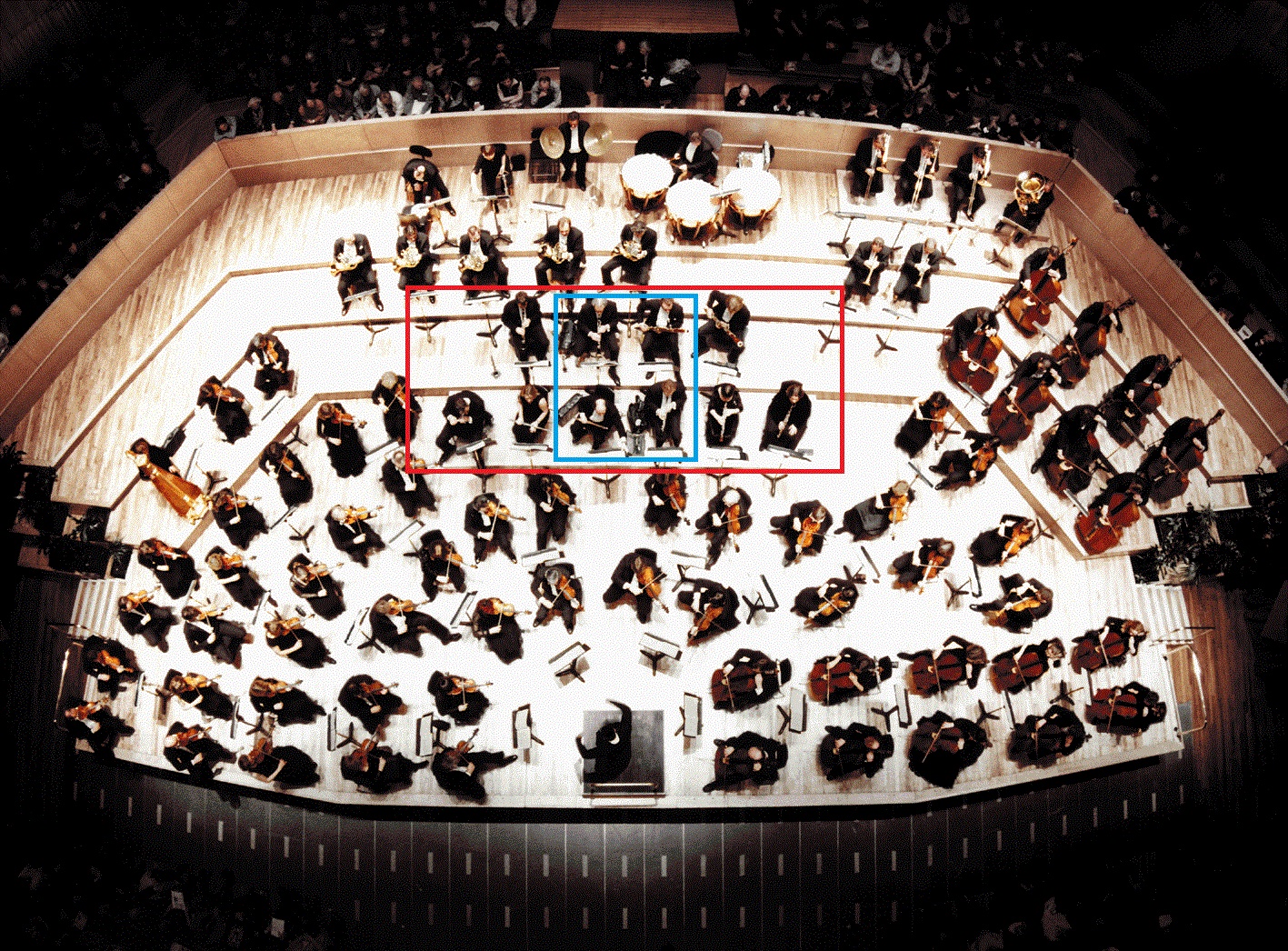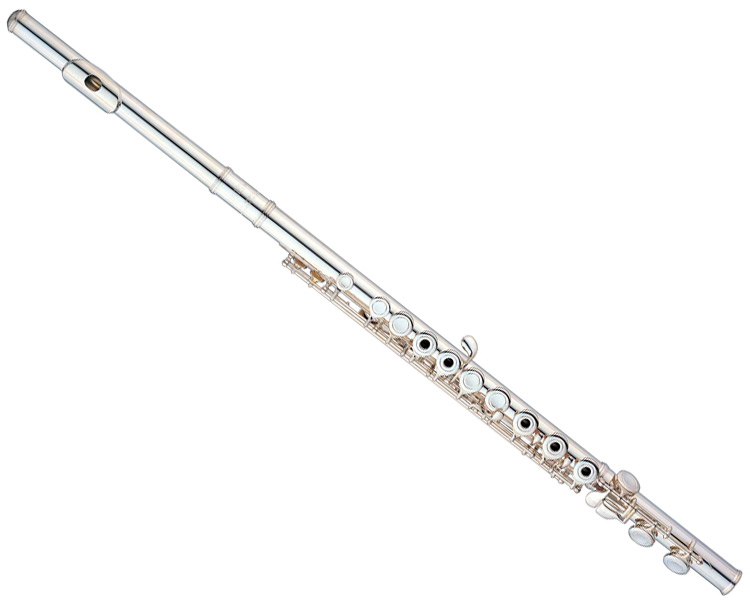A Youtube Person’s Guide to the Orchestra Part 1
Part 1: Woodwinds / Flute and Piccolo
Oy, this took some time! I have been neglecting the blog for much too long – though this had more to do with being rather badly busy and not so much with neglect per se – but anyway, I'm glad to be back, and hope to complete the first part of a possibly interesting project before the next trip.
This planned project is an Introduction to the Various Instruments of the Symphonic Orchestra, illustrated by Numerous Photos from the Internet as well as by Musical Examples diligently searched for, and encountered on YouTube by the Author. Or in short – tYPGttO (= the YouTube Person's Guide to the Orchestra) :-P.
This is hardly a novel idea, and several composers have done exactly that – or rather much better than that, writing whole musical works dedicated to showing the various instruments of the orchestra (three such works come to mind – Britten's Young Person's Guide to the Orchestra – from which the title of the present post is shamelessly nicked, Prokofiev's Peter and the Wolf, and Saint-Saëns's Carnival of the Animals – with Bartok's 2nd movement of the Concerto for Orchestra as a back-up variant) – but none of them had access to Google or YouTube (or a blog), so I thought this void could possibly be filled.
The plan is to have four large sections (Woodwinds, Brass, Strings, and Percussion and Oddities), with each post showcasing 1-3 instruments, depending on the amount of material I have. And now, without further ado, here is the first part:
Woodwinds
... are one of two groups of instruments which produce sound when air is being blown into them (the second one being the brass, which we'll cover in the next part). The air is blown through a mouthpiece at one end of the instrument, which will for the most part contain a reed – a thin strip of cane or plastic – that vibrates, creating the sound. The sound then passes through the body of the instrument and exits through an opening at the other end (usually called a 'bell'). The pitch is influenced both by the player's lips and the length of the column of air inside the instrument – the longer it is, the lower the sound. This is partially a pre-determined thing – a bassoon will generally always sound lower than a flute, just by being quite a bit longer – but within each instrument, pitch can be changed by closing or opening some or all of the holes bored into the body – these will be often covered by metal claps, called 'keys' (this will all become clearer as soon as we get to the photos and videos). The majority of the woodwind instruments, as the name suggests, are made of wood, though there are some that are made of metal (mainly the flute and the saxophone, which, strange as it may sound, is a woodwind instrument too), and even the wooden ones will usually have metal parts (like the key-claps I mentioned above). If you'd want to locate the woodwind players in the orchestra, they will usually be seated in two rows, facing the conductor (and the audience), right behind the middle section of the strings. (Er, this probably doesn't make much sense on paper – here's a quick photo for clarification, the woodwind group are inside the red oblong: )

Though the woodwind family is a large and varied one, there are four members that form a core group present in every symphony orchestra – the flutes, the oboes, the clarinets and the bassoons – and I'll start with those, leaving the few more exotic specimens to the end.
(a side note – the photo above shows the typical seating of the woodwind group – flutes and oboes in the first row [bottom row on the photo] – flutes on the left, oboes on the right – clarinets and bassoons behind them – clarinets on the left, bassoons on the right; there are usually at least two of each, sometimes three, rarely four; very rarely five – like in Stravinsky's Rite of Spring. But no matter how many there are, the four principal players – i.e. those performing the main part for each instrument – will always be in the middle of the group – so the rightmost flute and clarinet, the leftmost oboe and bassoon [inside the blue square] – a bit like four chess pieces occupying the center of the board.)
Flutes
A photo, first of all:

The flute is the only member of the core group that's made of metal and not of wood (though a black wooden version is occasionally seen), and the only one not to use a reed in its mouthpiece. Instead, the mouthpiece (the large hole, upper left of the photo) is simply a bored opening into which the air is blown by the player. According to Wikipedia (in which I trust, mostly), flutes are the most ancient musical instruments after the human voice, and examples dated to at least 35,000 years ago have been found. Also, a very large number of local variants have developed – search for Chinese / Irish / Russian / Turkish flute on YouTube to hear just a few of them.
The sound of the Western concert flute (which is the one used in classical music – its mechanism was finalized around 1850) is light and sweet and sometimes fluttering, which lends itself perfectly to the musical depiction of birds in animal-themed works; so to begin with, here's the Aviary from the Carnival of the Animals by Saint-Saens (breakneck speed, but brilliantly played – and the first pianist is Murray Perahia, which was unexpected, but way cool, I thought):
Here's a more modern take on birds – from Prokofiev's Peter and the Wolf (up to 04:14; a slightly goofy video – sorry! 🙂 – but it's a very good performance):
The flute seemed to be quite a favorite with French composers, with numerous examples to be found, especially from the Impressionist period (late 19th to early-mid-20th century). The sensuous and evocative opening of Debussy's Prelude to the Afternoon of a Faun is a big flute solo (the instrument prominently shown afterwards is the French horn – we'll get to it in the next part of the guide):
Next is the Sicilienne from Pelléas et Mélisande by Faure, a beautifully sweet melody that wouldn't quite work on any other instrument, I feel (despite numerous arrangements made thereof):
And of course it's the first solo instrument of Ravel's Bolero:
And, to finish, a short piece by Bach from the 2nd orchestral suite, which you might find familiar 🙂 (this is the baroque version of the modern flute – you can note the lack of key-clasps, and indeed of metal, and the even mellower tone) –
(this is of course just a small selection. If you'd like a few more extensive works for flute, you could try one of Mozart's flute concertos, or Prokofiev's flute sonata – a great work, and one not very typical for Prokofiev; the 2nd movement is especially quirky and cool, both to play and to listen to).
Piccolo
A close relative of the flute is the piccolo (meaning 'small' in Italian) – it's exactly twice as short, and accordingly sounds exactly one octave higher. It's also a very common member of the symphony orchestra, and its very high sound is always clearly audible above, well, above anything basically (adjectives such as brilliant, whistling, piercing and shrill come to mind 🙂 ) Here's how it looks:

And here's how it sounds (a solo from the last movement of Beethoven's 9th symphony, also known as the Ode to Joy):
Another example is the opening of the 3rd movement of Ravel's Ma mère l'oye (Mother Goose) – it's a beautiful work, full of orchestral color, and Ravel is using the entire woodwind group extensively – it might be worth a re-visit once we've covered them all) – the piccolo comes in a few seconds after the beginning:
So, that's it for today – I hope this was helpful and/or interesting, and I hope to continue in the very near future. See you next time!
A short aside: when I first had the idea of writing such a guide, the initial, enthusiastic plan was to put it all together in a single post – I mean, the entire orchestra. I envisioned it as an easy, fun entry to write. Then I started collating the pieces and excerpts I wanted to show and things started piling up – suddenly the idea of a single solo representing each instrument seemed to be doing an injustice to the instruments in question, I was now thinking about a small bunch of solos for each one, which brought about a decision to divide the whole thing into four posts, and then there were so many things I didn't know: are there any bass-clarinet solos out there? (not really.) And what about the contrabassoon? (one.) And when was each instrument invented and first used? – and do I need to go into the history of each one? (No! at least, not too much). And so on, to say nothing about YouTube sometimes refusing to cooperate and produce good versions of the solos I needed 🙂 And then I started actually writing the post, and by the time I got to the end of piccolo, I realized that four posts wouldn't really do either... so here we are.